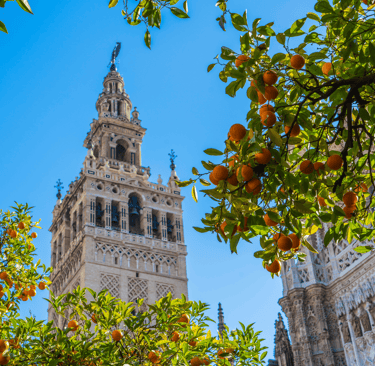Seville An Enchanting Destination in the Heart of Spain



Seville: A Charming Destination in the Heart of Spain
Seville, the capital of Andalusia, is a city that captivates everyone who visits. With its rich history, vibrant culture, and unique architectural beauty, Seville represents the soul of Spain in every corner of its cobbled streets. This article explores the reasons why Seville is one of the world’s most fascinating destinations, from its historic past to its cultural and gastronomic offerings.
History and Heritage:
Seville boasts a history spanning over 2,000 years. Founded by the Romans as Hispalis, the city flourished under the Roman Empire, and its influence remains visible in ruins such as Itálica, located just a few kilometres from the city centre. During the Middle Ages, Seville thrived under Muslim rule, leaving an impressive architectural legacy, including the iconic Alcázar — a royal palace blending Islamic, Gothic, and Renaissance styles. With the arrival of the Catholic Monarchs in 1492, Seville became the principal trading port between Spain and the New World. This period brought immense wealth to the city, reflected in architectural masterpieces like Seville Cathedral and its famous Giralda, a bell tower originally built as a minaret.
Architectural Icons:
One of Seville’s main attractions is its architecture, which reflects a blend of cultures and styles across the centuries. Highlights include:
Seville Cathedral: Considered one of the largest Gothic cathedrals in the world and a UNESCO World Heritage Site. Inside, it houses the tomb of Christopher Columbus.
The Giralda: Originally a Muslim minaret, this bell tower offers spectacular views of the city from its summit.
The Royal Alcázar: One of Europe’s oldest palace complexes and still the official residence of the Spanish royal family when in Seville.
Plaza de España: Built for the 1929 Ibero-American Exposition, this is a stunning example of Andalusian regionalist architecture. Its semi-circular design and tiled benches representing Spain’s provinces make it truly unique.
Sevillian Culture:
Seville’s culture is among the most vibrant in Spain. The city is famed for its passion for flamenco, an art form combining music, singing, and dance. In the Triana neighbourhood — considered flamenco’s birthplace — you can find authentic tablaos and peñas offering genuine performances. Festivals are integral to Sevillian life. Seville’s Holy Week is one of the most famous worldwide, known for its solemn religious processions and beautifully adorned pasos. Another highlight is the April Fair, a week filled with casetas, flamenco, and Andalusian traditions that attract both locals and visitors alike.
Gastronomy:
Seville’s culinary scene reflects its rich history and traditions. Tapas lie at the heart of local gastronomy. Signature dishes include:
Salmorejo: A cold tomato cream soup made with bread, garlic, and olive oil, served with ham and hard-boiled egg.
Spinach with chickpeas: A dish influenced by Arab cuisine, combining spices and traditional flavours.
Pescaito frito: A selection of small fried fish served as tapas or a main course.
Torrijas: A sweet dessert similar to French toast, traditionally enjoyed during Holy Week.
As for drinks, no visit to Seville is complete without sampling a glass of rebujito, a refreshing blend of manzanilla (dry white wine) and soda.
Nature and Green Spaces:
Despite its historic nature, Seville offers numerous green spaces that provide a welcome escape from the urban hustle. María Luisa Park, adjacent to Plaza de España, is an oasis of lush gardens, ponds, and gazebos. The Murillo Garden, near the Santa Cruz quarter, is another lovely spot for peaceful strolls. The Guadalquivir River also plays an important role in city life, offering boat trips and unique views of Seville’s skyline, including the Torre del Oro — a watchtower built during the Almohad period.
Contemporary Seville:
Though renowned for its history, Seville is a modern, lively city. The Metropol Parasol, also known as “Las Setas,” is a contemporary structure in Plaza de la Encarnación featuring an observation deck, a market, and an archaeological museum. The city is also a pioneer in sustainability, boasting an extensive network of cycle lanes and public transport, making it one of Spain’s most pedestrian and cyclist-friendly cities.
Seville in Film and Literature:
Seville has inspired countless works of art, literature, and cinema. It has been the setting for operas like Carmen and Don Giovanni, as well as films such as Star Wars: Episode II and Lawrence of Arabia. Its romantic atmosphere and unique landscapes continue to attract artists and creators from around the world.
Conclusion:
Seville perfectly combines a rich past with modern energy. Whether exploring historic monuments, enjoying flamenco shows, tasting delicious cuisine, or simply wandering its enchanting streets, Seville promises an unforgettable experience. It is a place where history comes alive and where every visitor finds something to fall in love with. It is no surprise that those who visit dream of returning again and again. Book your trip now.
Ubicación
Sevilla, España
